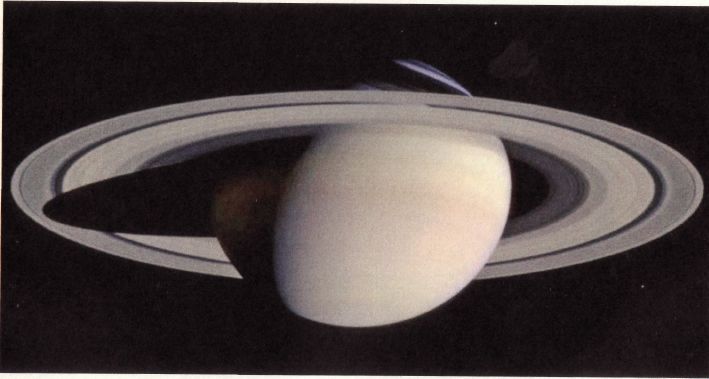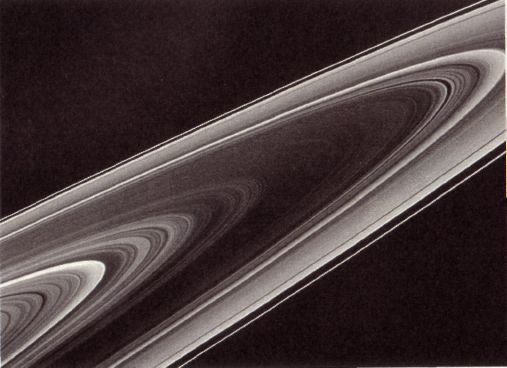young man who was opposed to privilege in the social sphere. If you look at Einstein's autobiographical writings, I think it is quite clear that his opposition to privilege in the social world was connected with his opposition to privilege in fundamental physics.
Well, if we don't have a distinctive position or velocity or acceleration, or a separate origin from the other plants and animals, then at least, maybe, we are the smartest beings in the entire universe. And that is our uniqueness. So today the battle, the Copernican battle, is, in somewhat covert form, being waged on the issue of extraterrestrial intelligence. Now, this doesn't guarantee that there is extraterrestrial intelligence. It may be that the Copernican insights-the principle of mediocrity, if you wish to call it that-worked for all these other things, but on extraterrestrial life it doesn't, and we are unique. I will come back to that later, but I believe that the ongoing Copernican revolution is relevant to this debate as well.
There is today another battlefield on which the Copernican insights are being attacked. It is connected with one of the classic arguments for the existence of God, that is, the Western kind of God, namely, the argument from design.
The idea of the argument from design goes like this: Suppose you know nothing about watches and you come upon an elegantly tooled pocketwatch. And you open it and everything is going
Well, Darwin showed, through natural selection, that there was a way other than the existence of a Watchmaker, a way in which it was possible for enormous order to emerge from a more disordered natural world without the interposition of any capital-
The ideas behind natural selection were that there was such a thing as a hereditary material, that there were spontaneous changes in the hereditary material, that those changes were expressed in the external form and function of the organism, that organisms made many more copies of themselves than the environment could support, and therefore that some selection among various natural experiments was made by the environment for reproductive success, that some organisms, by pure accident, were better suited to leaving offspring than others.
Now, an essential aspect of this idea is that you need to have enough time. If the universe is only a few thousand years old, then Darwinian evolution is nonsense. There isn't time. On the other hand, if the Earth is a few thousand million years old, then there is enormous time, and we can at least contemplate that this is the source, as certainly all of modern biology suggests, of the complexity and beauty of the biological world.
This sort of argument from design we can find in other aspects of nature. And I'd like to discuss two of them. One is Isaac Newton's understanding of the order within the solar system, and the other is a most interesting although, I believe, flawed approach to the laws of nature, put forth in recent times, called the 'anthropic principle.'
One of Newton's many extraordinary accomplishments was to show that, granting a few simple and highly nonarbitrary laws of nature, he could deduce to high precision the motion of the planets in the solar system. The Newtonian method has remained valid from that time to this. It is precisely Newtonian physics that is used routinely in my line of work, sending spacecraft to the planets, something that you might be tempted to say was far beyond Newton's expectations. But he in fact did envision at least the launching of objects into Earth orbit.
What Newton found is that there is a distinctive plane to the solar system. Copernicus had essentially proposed this, but Newton showed in detail how it worked. The orbits of the planets circle the Sun, all of them very close to the ecliptic plane, also called the zodiacal plane (because the constellations of the zodiac are arrayed around this plane). And that's why the planets and the Sun and the Moon apparently move through the zodiac. 'Why is everything so regular?' Newton asked. 'Why are all the planets in the same plane? Why do they all go around the Sun in the same direction?' It's not that Mercury goes around one way while Venus goes around in another way. All of the planets go around in the same sense. And, as far as he knew then, they all rotated in the same sense. The planets had something astonishingly regular about them. On the other hand, the comets that were known in his day were helter-skelter. Their orbits were at every possible angle to the ecliptic plane. Some went around in the direct sense; some went around in the retrograde sense. And they were tilted in all sorts of directions.
Newton believed that the distribution of cometary orbits was the state of nature and that is how the planets would have moved had there not been an intervening hand. He believed that God established the initial conditions for the planets that made them all go around the Sun in the same direction, in the same plane, and rotating in a compatible sense.
Now, in fact, this is not a strong conclusion. And Newton, who was extraordinarily perceptive in so many areas, was clearly not here.
The outline of a general solution of this problem was provided, independently as far as we can tell, by both Immanuel Kant and by Pierre-Simon, the marquis de Laplace.
Newton, Laplace, and Kant all lived after the invention of the telescope and therefore after the discovery that Saturn has an exquisite ring system that goes around it, a portion of which you see here in this far-encounter photograph. It is a flat plane of clearly fine particles. The first clear demonstration that it's made of many particles, that it isn't a solid sheet, was made by a Scottish physicist, James Clerk Maxwell.
Here's a closer view of the rings of Saturn. And you can see an enormous sequence of such rings and a gap-the so-called Cassini Division in the rings.


If you take a close-up look at this portion, you can see a succession of rings. We now know that there are many hundreds of these rings, all in a flat plane, and we now know, as both Kant and Laplace guessed, that they're made of tumbling boulders and dust particles. The rings of Saturn, by the way, are thinner compared to their lateral extent than is a piece of paper.
Kant also knew about objects that were then called nebulae. It was not clear whether they 'were within our Milky Way or beyond-we now know, of course, most of them are beyond. Some of the nebulae were again flattened systems made, we now know, of stars.
So Kant and Laplace, both of them explicitly mentioning the rings of Saturn, and Kant explicitly mentioning the elliptical nebulae, proposed that the solar system came from such a flattened disk and that somehow the planets condensed out of the disk. But if that's the case, the disk, after all, has some rotation. Everything that condenses out of it will be going around in the same direction. And if you think about it for a moment, you will see that as the particles come together and make larger objects, they will have a common sense of rotation as well.
What Kant and Laplace proposed is what we now call a solar nebula, or accretion disk, whose flattened form was the ancestor of the planets, and that it is perfectly easy to understand how it is that the planets are in the same plane with the same direction of revolution and the same sense of rotation.
What is more, we now know that the random orientation of the comets is not primordial and that very likely the comets began in the solar nebula, all going around the Sun in the same sense, were ejected by gravitational interactions with the major planets, and then, by the gravitational perturbations of passing stars, had their orbits randomized.

